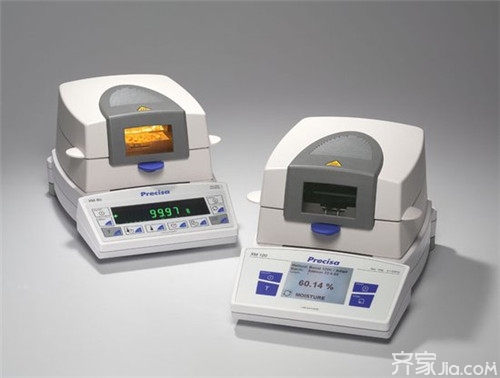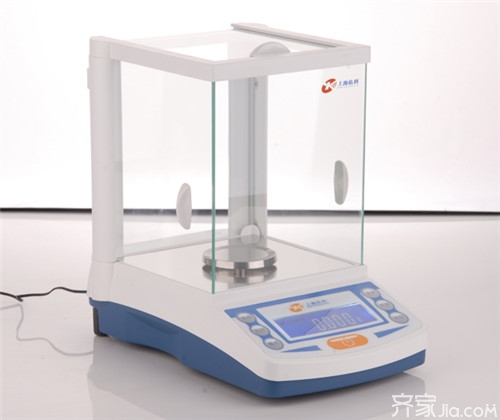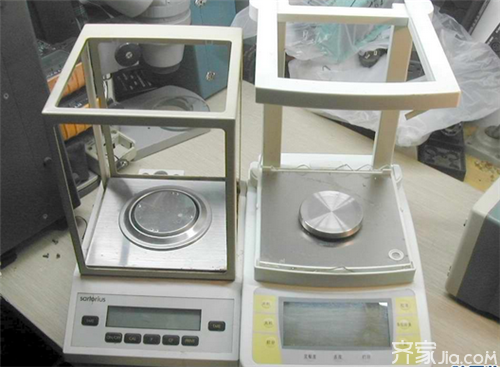
[Electronic precision balance features]
Backlit LCD display makes it easy for users to read weighing results in different weighing environments. With 12 customizable user interfaces to help you save time and reduce errors, the detachable windshield design is used to realize the balance. Quick cleaning, standard RS232 communication interface, easy to connect printers, computers and other peripheral devices. The output of the printout conforming to the GLP specification is automatically calibrated with an external weight to ensure the accuracy of the weighing result. Built-in applications such as basic weighing, piece weighing, percent weighing, and dynamic weighing [use of electronic precision balances]
1. Check and adjust the balance to the horizontal position.
2. Check in advance whether the power supply voltage matches (regulate the voltage regulator if necessary) and preheat the power to the required time according to the requirements of the instrument.
3, open the balance switch after enough warm-up time, the balance will automatically adjust the sensitivity and zero point. After the stability flag is displayed, it can be officially weighed.
4. When weighing, put the clean weighing bottle or weighing paper on the weighing pan, close the side door, press the peeling key lightly, the balance will automatically calibrate the zero point, and then gradually add the material to be weighed until the required weight.
5. The weight of the material being weighed is the actual value displayed on the screen when the “→†sign appears in the lower left corner of the display.
6. The weighing bottle (paper) shall be removed in time after the end of the weighing, the side door shall be closed, the power shall be cut off, and the use registration shall be made.

[precision balance use matters needing attention]
1. Before using the precision balance, first use standard weights to calibrate. Balances with different precisions should select the corresponding level weights.
2, to keep the work room clean and prevent the impact of air currents.
3, the room should not have direct sunlight, try to use the dark side of the room or use curtains and other dark methods.
4, to be read within a fixed time after loading, such as each time after the reading of 5 seconds after the load readings are displayed or when the unit is displayed when the value of the reading shall prevail.
5, please adjust the level of the bubble before use to make it in the middle position.
6, after multiple measurements (3 to 5 times), take the average.
7. Precision balances should be kept away from sources of shock and vibrations, such as vibration machinery such as roads, railways, and vibration machines, and earthquake-proof measures must be taken when they cannot be avoided.
8. Keep away from heat and high-strength electromagnetic fields.

Xiao Bian concludes: The above introduced the relevant knowledge of precision scales and hopes to help everyone. For more relevant knowledge, please continue to pay attention to this website information platform. Follow-up will present more exciting content for everyone.
How to avoid decoration contract trap
Flame Retardant Plasticizer
Bisphenol A Bis-(Diphenyl Phosphate)(BDP) 5945-33-5/181028-79-5
Triethyl Phosphate(TEP) 78-40-4
Resorcinol bis (diphenyl phosphate)(RDP) 125997-21-9/57583-54-7
diethyl bis(2-hydroxyethyl)aminomethylphosphonate 2781-11-5
Tricresyl phosphate(TCP) 1330-78-5
Isopropylphenyl phosphate(IPPP) 68937-41-7
Isopropyl phenyl diphenyl phosphate(IPDPP ) 28108-99-8
2-Ethylhexyl Diphenyl Phosphate(EHDP) 1241-94-7
Isodecyl diphenyl phosphate(IDPP) 29761-21-5
Tributyl Phosphate(TBP) 126-73-8
Triaryl phosphates butylated 68952-33-0
Trixylenyl phosphate(TXP) 25155-23-1
Tris(2-butoxyethyl) phosphate(TBEP) 78-51-3
Cresyl Diphenyl Phosphate(CDP) 26444-49-5
Tri-isobutyl Phosphate(TIBP) 126-71-6
Triphenyl phosphate(TPP) 115-86-6
Tri (2-ethylhexyl) Phosphate 78-42-2
Trimethyl phosphate(TMP) 512-56-1
Tris (1,3-dichloroisopropyl) phosphate(TDCP) 13674-87-8
Oligomeric chloroalkyl phosphate ester 109640-81-5
Tris (2-chloropropyl) phosphate(TCPP) 13674-84-5
Tris(2-chloroethyl)phosphate (TCEP) 115-96-8
Flame Retardants for Plastics, Flame Retardant Plastic Compound, Flame Polymeric Plasticizers,Flame Retardant For EPS & XPS,Flame Retardant For PP,Flame Retardant For PU
Shandong Novista Chemicals Co.,Ltd (Novista Group) , https://www.novistachem.com